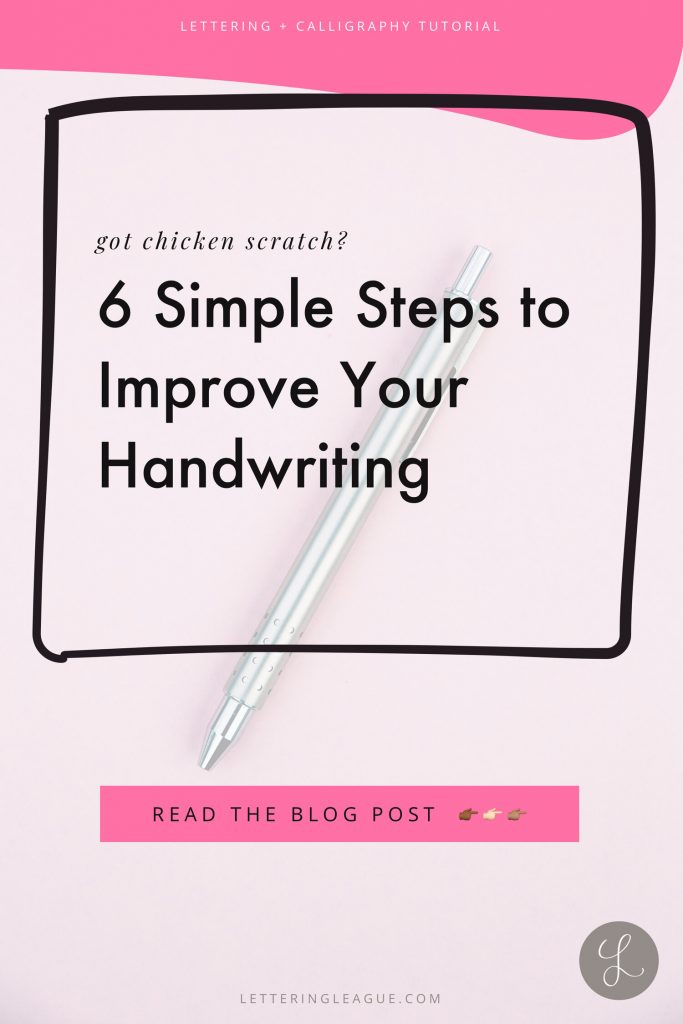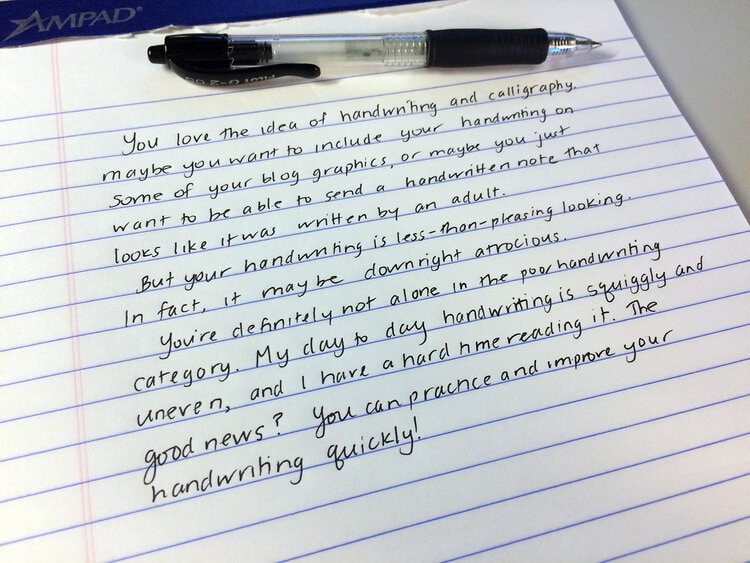Consistency is key. Start with the letter A. No matter what style you practice of your own handwriting, whether it’s cursive or not, you want to find a set of letter styles that you like to write and that look good together.
Practice with varying slopes and angles, heights of your letters, roundness of letters, etc. Once you start to see a style pattern in your handwriting, practice the same letter over and over again (literally fill one page with a’s and then the next with b’s) until you start to feel comfortable.
For slants, you can even create your own angled calligraphy guide and place it under your paper to practice.
Experiment with Pens and Writing Utensils to Maximize Your Handwriting Improvement
There are seemingly countless brands and types of pens and writing utensils available. It’s up to you to find the style of pen that works best for the level of control, line thickness, pressure, and preference you prefer.
For example, some gel pens are too slippery and move too fast. A super fine pen may not work for someone with a heavy hand. Cheaper ballpoint pens may be clumpy and messy.
For basic handwriting, I prefer fine felt tip markers over any other type of writing utensil, because they provide more friction on the paper and help me slow down. You can even practice with an old fashioned #2 pencil in order to help you slow down to improve your handwriting.
Recently, my favorite pens for beautiful handwriting include:
- The Pilot G2 for faster writing on more textured paper
- The Zebra F301 for slower writing on smoother paper
- The Soft Touch Rubberized Bliss (Custom Pens) for softer and personalized approach
Learn Traditional Calligraphy to Improve Your Handwriting Skills
I know this seems counter-intuitive. It’s like I’m telling you to run before you can walk. However, I saw vast improvements with my hand lettering after I studied calligraphy. Learning how to form letters traditionally can help you understand consistency and anatomy.
My recommendation: learn basic strokes of brush calligraphy.
Grab a calligraphy book that isn’t for pointed-pen calligraphy (I recommend Calligraphy for Dummies) and a $1 grid composition book or cheap graph paper. Studying this book helped me slow down (super important!!) and focus on consistent letterforms.
Finally, Practice. Practice. Practice.
I can’t stress how important regular practice is! If improving your handwriting sounds like a chore to you, try to make it fun:
- Journal daily—with pen and paper.
- Write letters to your friends (because really, everyone would love to receive a handwritten letter!).
- Write out your grocery list as neatly as possible.
- Leave handwritten notes in your kids’ lunches.
- Take notes—even sketchnotes—when listening to a podcast or watching an educational YouTube video.
- Start a bullet journal.
Even if you can’t dedicate time to daily practice, make it a point to write neatly for everything you write down—notes at work or school, filling out forms, etc.
All in all, slow down, pay attention, and work to find the handwriting style that is best for you, along with your preferred pen type and paper combination.






Ali
I need this course